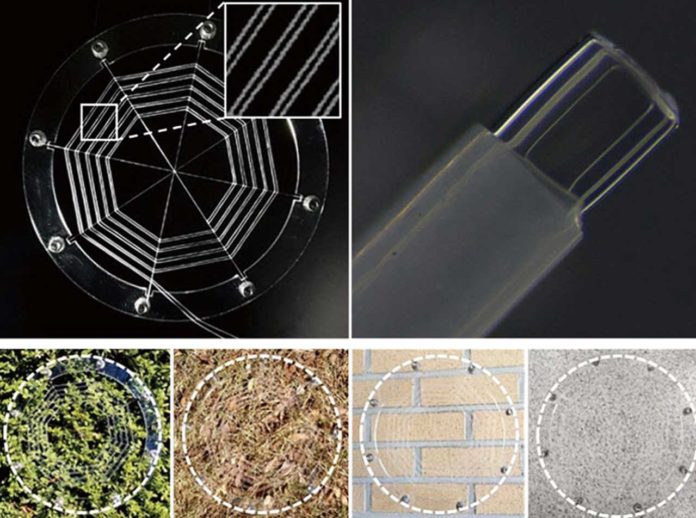Spiders are the most amazing web architects. Using their silk, they construct their webs based on a minimalist framework. This allowed them to sense even the slightest vibrations produced when their prey becomes entangled and also allows them to clean their webs of dust and debris by slingshotting contaminants away.
Inspired by these amazing web architects, Professor Jeong-Yun Sun from Seoul National University has taken a step towards advancing the field of robotics. Along with his research team, Profesor Jeoung-Yun Sun has created a new robot — called the Ionic Spiderweb (ISW) — which takes a cue from the way spiders weave webs. This ionic spiderweb is capable of sensing, adhesion, and self-cleaning through electrostatic actuation and dirt-shirking coating.
The robot consists of an ionically conductive organogel core encapsulated in elastic and durable silicone rubber. A high voltage of electricity generates an electric field that polarizes encompassing objects. It creates a phenomenon known as electrostatic adhesion, capturing various objects such as metals, polymers, and organic materials. Besides, it has elastic nature that allows it to stretch to three times its resting length, which brings about the capacity to catch targets with a 68-fold greater mass.
The sensing ability of ISW allows it to initiate its electrostatic adhesion abilities only when necessary. By minimizing the “on-time” of the ISWs, the machines’ power consumption and contamination are kept to a minimum, which ultimately results in 32.5 times greater adhesion force long-term compared to machines without this sensing ability.
Like vibrations generated by spiders to slingshot contaminants away, the ISW cleans contamination by electrostatic vibration. Electrostatic vibration cleaning allows ISWs to retain their functional properties up to 98.7%, critical to their applicability in the real world.
Professor Jeong-Yun Sun noted, “Ionic spiderwebs provide a vital framework for further translation of soft robots into the real world. The technologies and techniques demonstrated in this research can be applied to numerous fields, from the creation of artificial muscles to electronic skin.”
